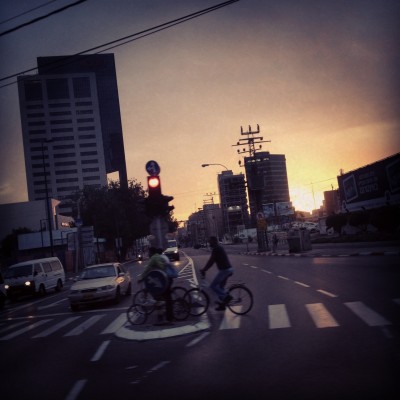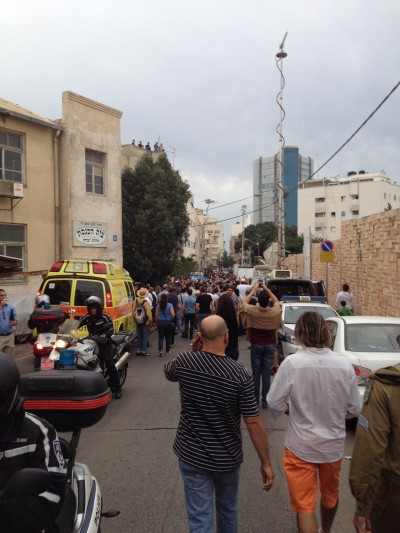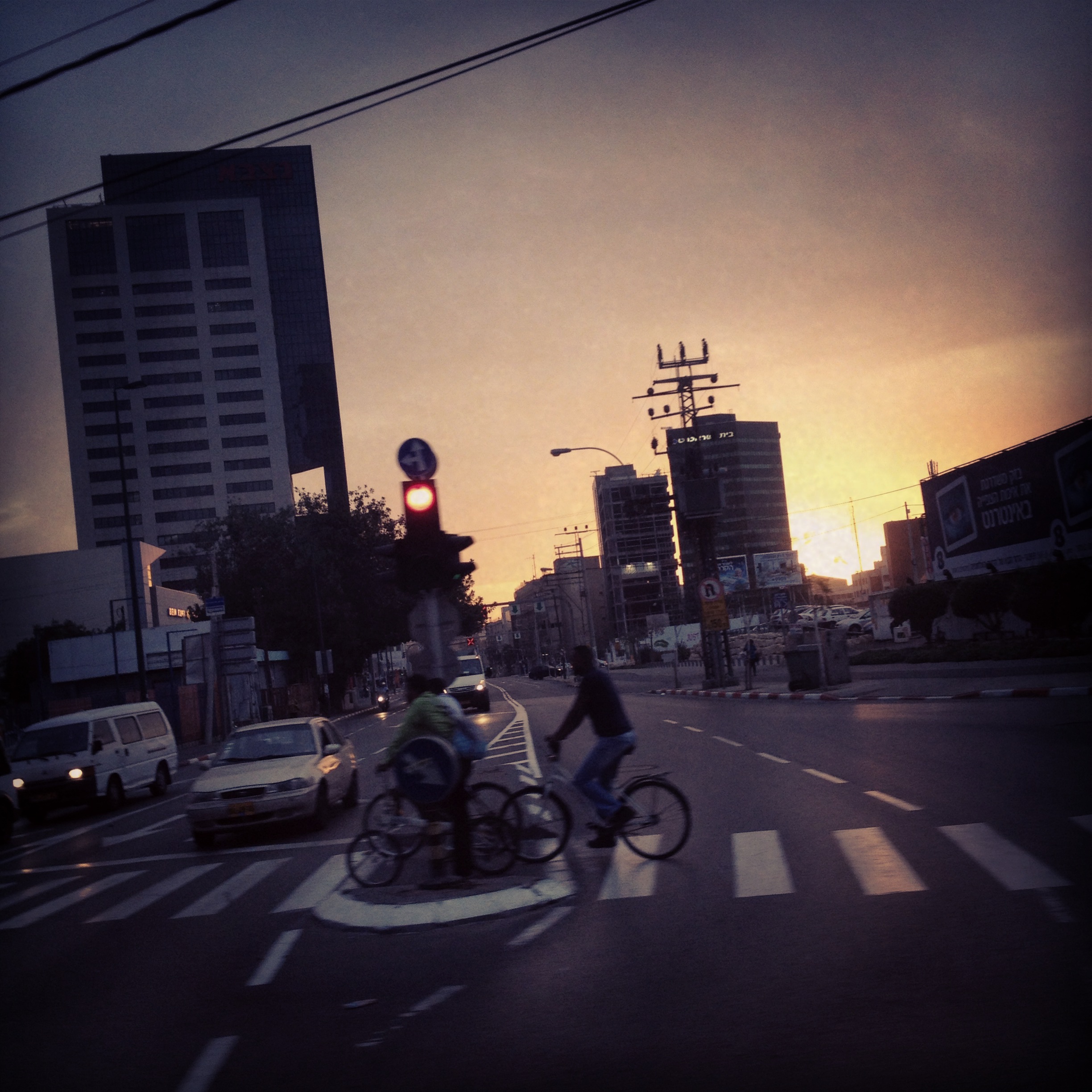
There I was. Sitting in the back of an ambulance with sirens blaring, racing through red lights, wearing proudly but cautiously the official Magen David Adom uniform I had just received the day before. All around me was a mixture of loud Hebrew, muddled directions from the ambulance dispatcher on the radio, questions for me about the patient’s blood pressure and pulse. Focusing on the patient, I started to hear another source of Hebrew – soft but ever-increasing in volume, strength, and clarity. This 96-year old woman who had complained of weakness only moments before squeezed my hands powerfully as she started to pray. The whole ride to the hospital I sat next to her, hands intertwined as she sang out the prayers of our ancestors. Although her body was weak, her grip was strong, and her spirit, her will to live, was even stronger. The paramedic looked back at me from the front of the ambulance and offered, “We’re all in this together.”
Medically, my first shift was perhaps one of my most “boring,” but it was an introduction like none other to the type of service that I, as a member of the Magen David Adom team, could bring to Tel Aviv residents in need. This patient still refused to let go of my hands as we made our way into the emergency room at Ichilov hospital. And though her family told us she only spoke Romanian, her Hebrew was deeper and truer than anything my ulpan-inspired conversational Hebrew could ever be.
A few weeks before that moment, I landed in Israel from New York. I had just graduated college, and the Israeli August sun was a nice welcome and a warm endorsement of my decision to defer medical school for a year. I wanted to immerse myself in Hebrew, in Tel Aviv, in Israeli culture.
Volunteering with Magen David Adom (MDA), Israel’s national emergency medical service, allowed me to experience a microcosm of Israeli culture, all within the bounds of one somewhat cramped vehicle. In a single ambulance call there was always crazy driving, loud yelling, confusion and commotion, coupled with caring volunteers, strangers’ words of support, and questions about my dating life (so I could be set up with these patients’ nice Jewish sons, of course).
All of these things are so typical of life in Israel; you experience them all by simply walking the streets of Tel Aviv. Working in the ambulance pushed these boundaries even further, to experience sides of Israel that a non-Israeli like myself would not otherwise encounter. The sharp divide between the ultra-Orthodox and the secular worlds was no longer a theoretical presumption once I was standing in Bnei Brak homes and synagogues, wearing pants and feeling quite uncomfortable (to the surprise of my confidently secular self). The influx of Sudanese refugees was no longer a supposed transformation once I was working in south Tel Aviv, providing care to those with (and without) papers. The socioeconomic divide was not some far-off idea that once inspired the tent city protests when I was actually entering people’s homes and seeing the disparity in living conditions between families in different parts of the city.

Within each of these worlds — religious and secular, “Israeli” and “non-Israeli,” rich and poor — I worked each day to provide medical care. To me, one of the beauties of medicine lies in its universality. And volunteering in Israel allowed me to experience a truly universal provision of care.
Together, the patients I have seen speak dozens of languages. I have cared for patients ranging from 1-week to 99-years-old. I have worked in corners of abandoned parking lots where elderly drug-users live and in beach-side hotel rooms with teenagers threatening drug overdoses. I have seen firsthand the inadequacies in social services that affect broad swaths of Israeli society: homes for the disabled of questionable quality, callous interactions between police and new immigrants, more dejected homeless people than I would like to admit. While I was called in each of these events to provide emergency care, I came to more deeply realize that care extends far beyond the simple medicine involved with each case.
Don’t get me wrong; I did see some very interesting medical cases. I saw extreme infections, stabbings, miscarriages, heart attacks, and performed my first CPR. I went through training to be a Certified First Responder, I researched the medical background of each patient’s health issue, and gained valuable medical knowledge even before my first class at medical school. Though this experience will help guide my studies, these medical lessons were truly only a small part of what I took away from working on the ambulance and of what I now see is the wide-ranging role of medicine within broader society.
Medical care provides support when a person’s health (whether physical, mental, or social) is most vulnerable. And it is most effective on a personal level. The intimacy that is implicit within any medical interaction–exposing your worries, your health, your body to a stranger– made me view emergency medicine in a completely new light.
It helps that I volunteered in a place where no one is considered a total stranger and where intimacy is deeply embedded within the culture. “We’re all in this together” is truly descriptive of Israeli life. A 96-year old woman revealing her soul through prayer grabbing a stranger’s hands is just another day on the MDA ambulance.
Julia Goldberg will be a student at NYU School of Medicine.

